Nibali: I wanted to see who would come after me
Wind restricts GC battle on Mount Etna as Shark tests waters
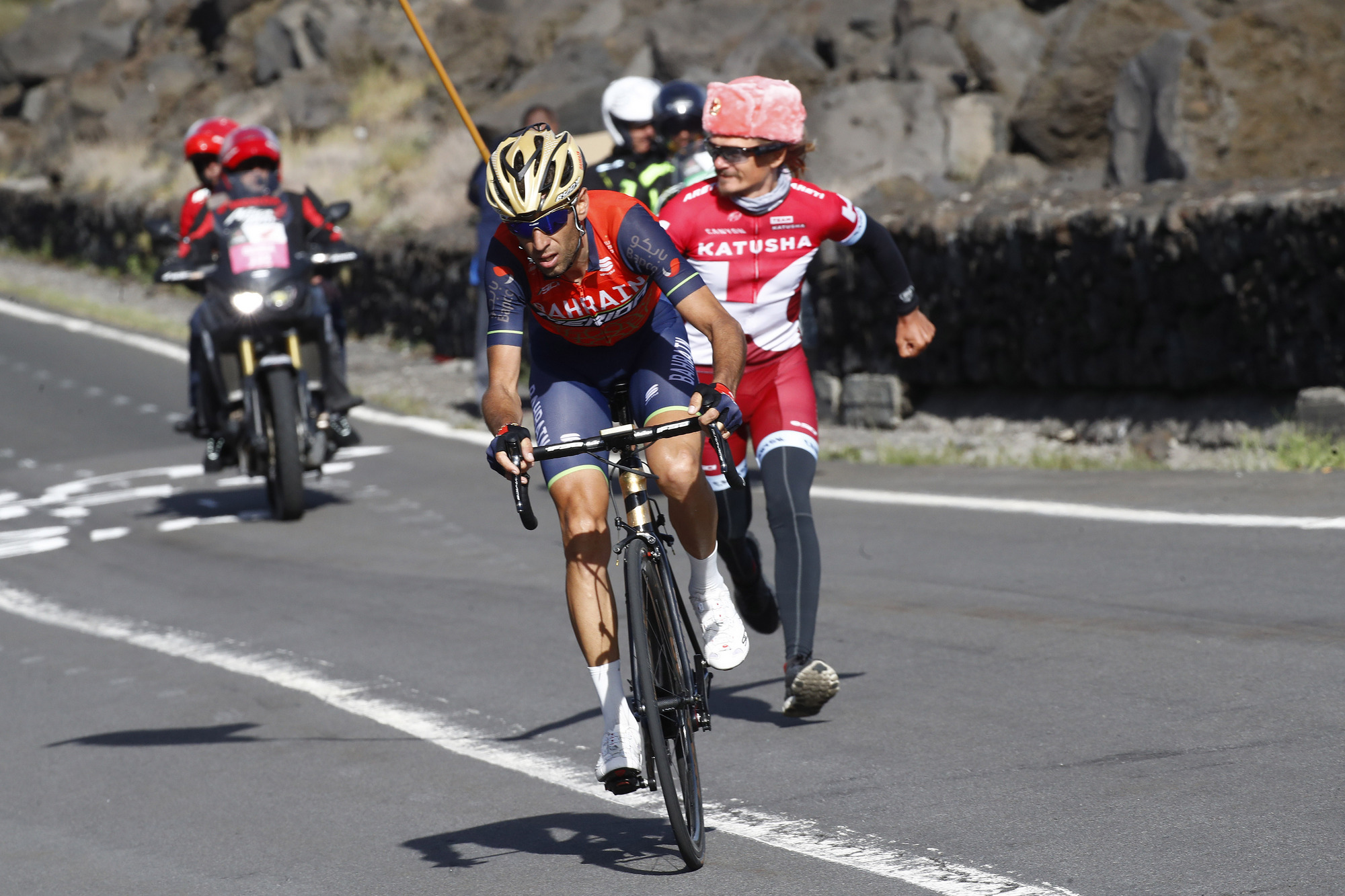
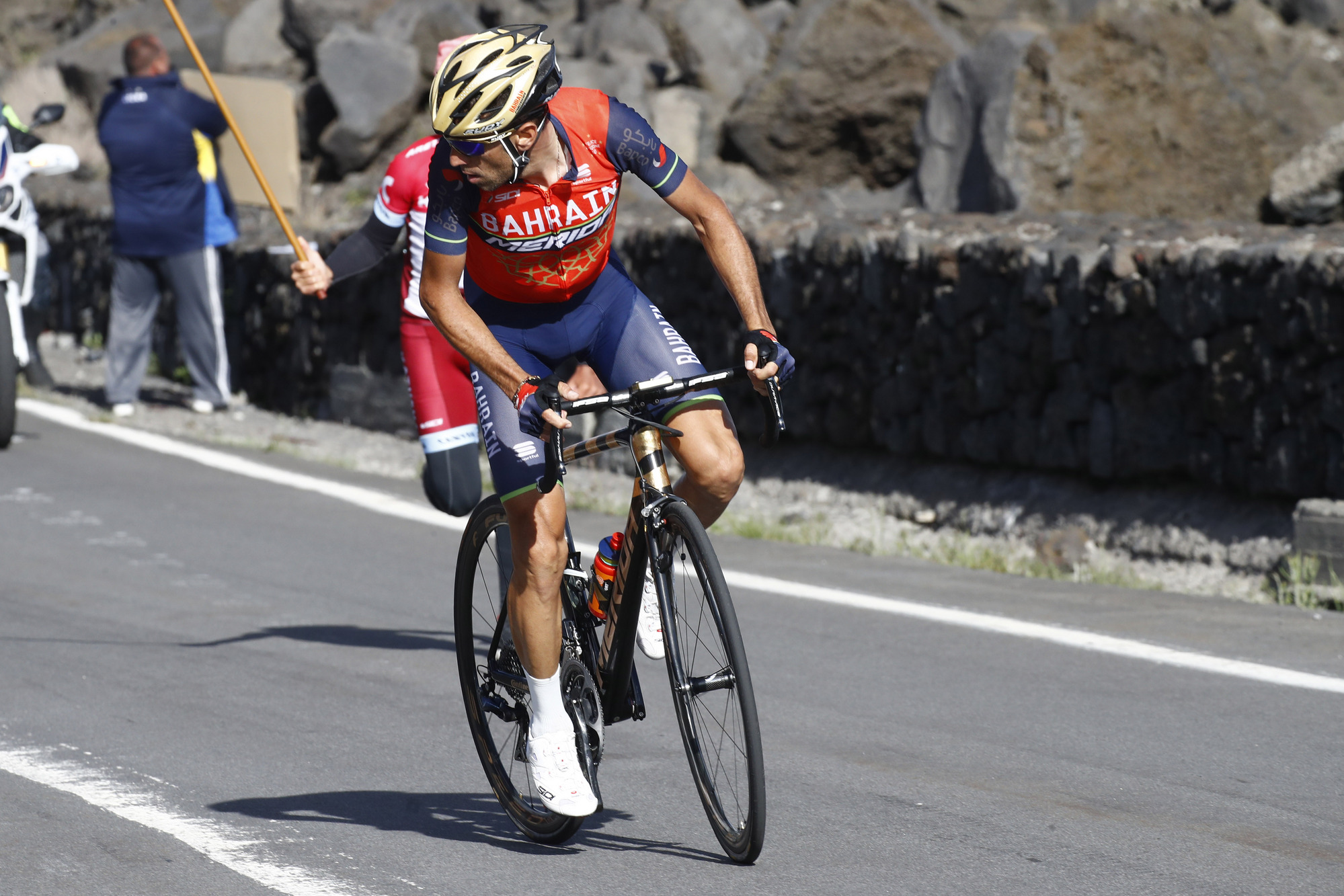
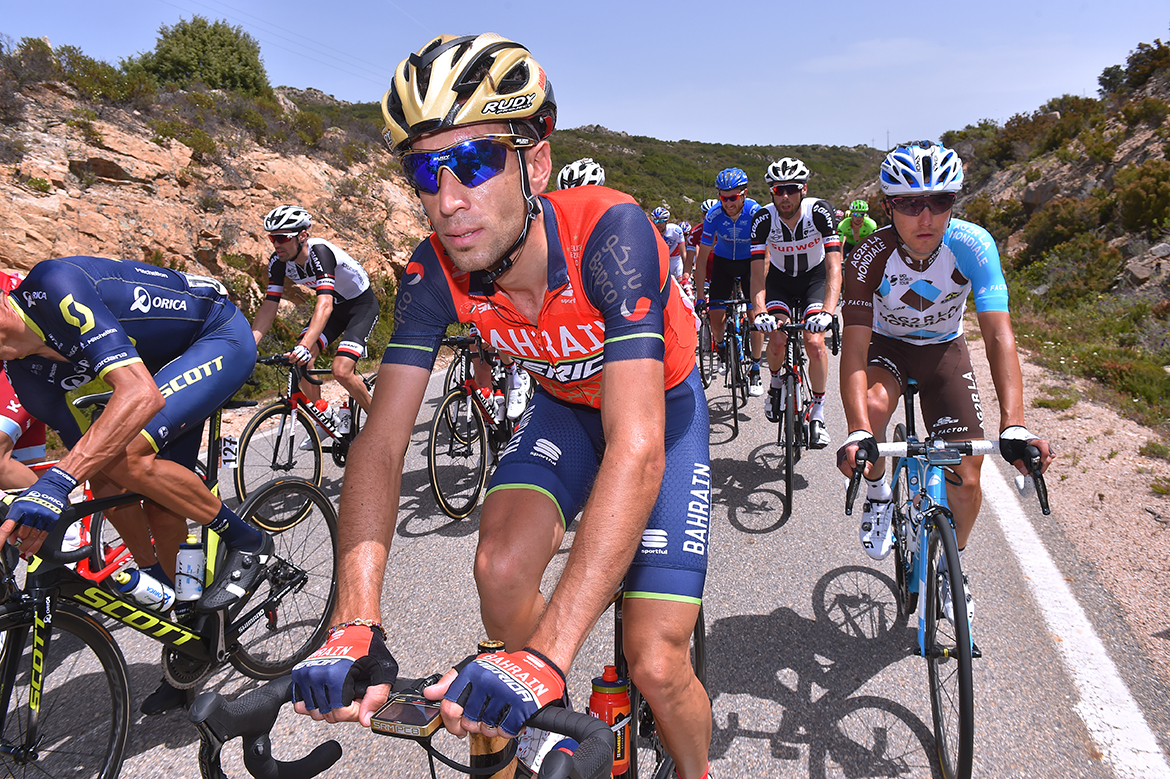
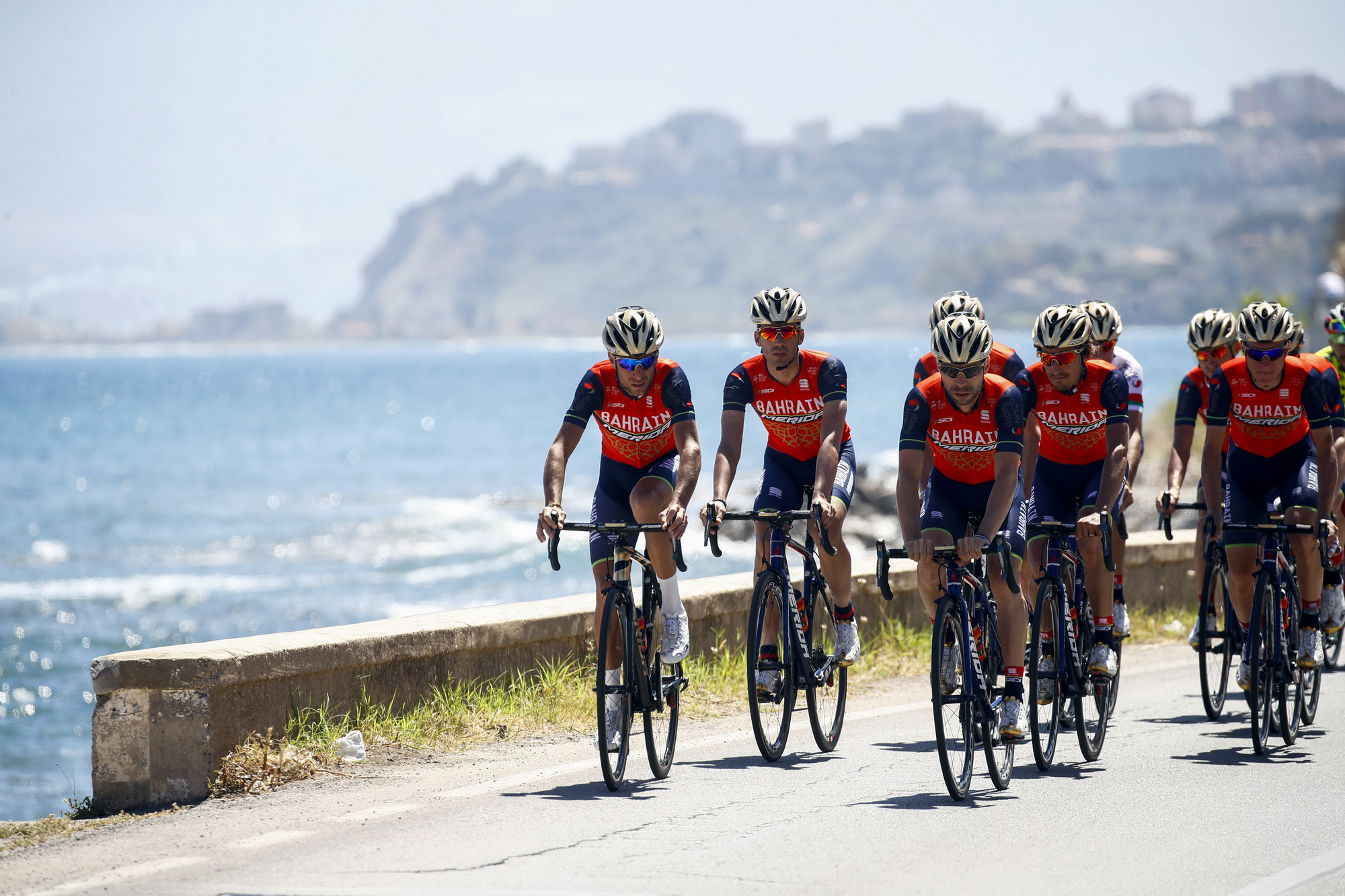
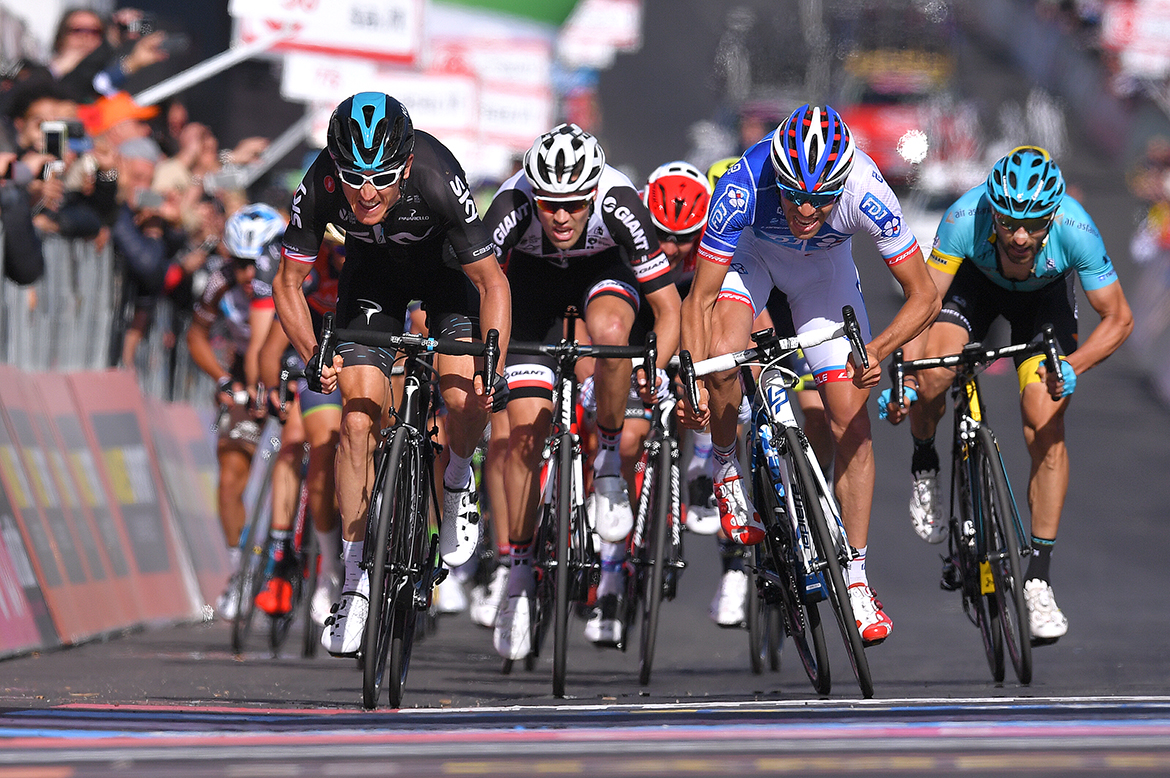
When the Giro d'Italia last visited Mount Etna in 2011, Vincenzo Nibali conceded afterwards that the emotion of the occasion had perhaps impeded his performance. This time around, the Bahrain-Merida man was rather more measured in his approach to the homecoming, testing the waters with a probing attack four kilometres from the summit, but then relenting almost as quickly due to the block headwind in the finale.
The headlines beforehand spoke of the potential for a metaphorical eruption atop Etna as the Giro resumed in Sicily on stage 4, but the seismic activity was instead limited to a few tremors among the favourites. Nibali and Tom Dumoulin (Sunweb) both made brief, speculative efforts, and Ilnur Zakarin (Katusha-Alpecin) snatched ten seconds with a smart late attack, but, by and large, the general classification picture remained dormant.
Nibali was among those called to anti-doping after the stage, and a small retinue of reporters – not to mention a boisterous group of tifosi – kept vigil for almost an hour. When Nibali finally emerged, it was with a sheepish grin. "How was it?" he was asked. "The control? It was good," Nibali joked. "Seriously, after a rest day, I can say I'm happy with how the stage went."
Nibali finished the stage in 10th place, 29 seconds down on stage winner Jan Polanc (UAE Team Emirates), and in the same group as his chief rivals, including Thibaut Pinot (FDJ), Nairo Quintana (Movistar) and Adam Yates (Orica-Scott).
It is no secret that the nascent Bahrain-Merida team lacks the kind of climbing talent that Nibali had at his disposal during his time at Astana, but the team was prominent on the 18-kilometre haul from Nicolosi to Rifugio Sapienza on Tuesday, with Franco Pellizotti seeing fit to attack nine kilometres from home before Nibali's own acceleration nearer the summit.
"We didn't really want to take the situation in hand because we thought some other teams would set up a bit differently, but it panned out the way it did," Nibali said. "When I made my move, with about four kilometres to go, there was quite a bit of a headwind and they closed me down. There was another attack from Dumoulin, and then Zakarin went away and we were all watching each other. On the first summit finish like that it's always a bit difficult, but va bene così."
What a difference a year makes. 12 months ago, Nibali launched a similar attack on the Giro's first summit finish at Roccaraso and was promptly deposited out the back of the leading group on the final approach to the line. The Sicilian cut a downcast, almost haunted figure as he sat on the steps of the Astana bus that afternoon, but his disposition was rather sunnier atop Etna. At that point, mind, news of his teammate Javier Moreno's expulsion from the race for pushing Diego Rosa had yet to reach him.
Get The Leadout Newsletter
The latest race content, interviews, features, reviews and expert buying guides, direct to your inbox!
"It's encouraging, I feel good," Nibali said. "In the end, I was feeling good, otherwise I wouldn't have had a go. I just wanted to see who would come after me. It wasn't easy to attack with a headwind like that but I tried, just to see if it would kick off with attacks and counter attacks."
Sizing up rivals
The expectation beforehand was that the climb of Etna would, like the verismo of Giovanni Verga, show things as they really are, but gauging the relative condition of the favourites for the maglia rosa was difficult in such conditions. It would premature to draw any conclusions, and Nibali shrugged off the idea that he and Quintana had played out a scoreless draw.
"More than Quintana, I saw that Dumoulin was active and I saw that Thibaut Pinot was active," Nibali said. "Quintana was more on the defensive today. He sent his teammate Amador up the road at one point, but he was almost always in the wheels."
By now, Nibali is well-versed in the tectonic movements of a Grand Tour. The favourites may have played out something of a draw on the windswept haul up Etna, but the day's 4,000 metres of climbing will still have made a hefty deposit in the cumulative fatigue of the peloton.
"The first climb, the Portella Femmina Morta, was very long, sure, but it's wasn't very hard so a lot of riders got to the finish with a lot of strength left," Nibali said. "Still, over the course of the Giro, day by day, the fatigue will start to show. We'll see how it goes on the harder stages."
The next major rendezvous comes on the summit finish at Blockhaus on Sunday, and though Nibali was absent when the Giro visited in 2009 and was unable to reconnoitre the climb due to snowy conditions this spring, he will be able to rely on some local knowledge all the same.
"I wanted to go to see it but I knew it was like ski slope up there, so I couldn't. But my brother's girlfriend is from Roccamorice [at the base of the climb], so he looked at the roads for me and explained how it is," Nibali said. "It's harder than this."

Barry Ryan was Head of Features at Cyclingnews. He has covered professional cycling since 2010, reporting from the Tour de France, Giro d’Italia and events from Argentina to Japan. His writing has appeared in The Independent, Procycling and Cycling Plus. He is the author of The Ascent: Sean Kelly, Stephen Roche and the Rise of Irish Cycling’s Golden Generation, published by Gill Books.